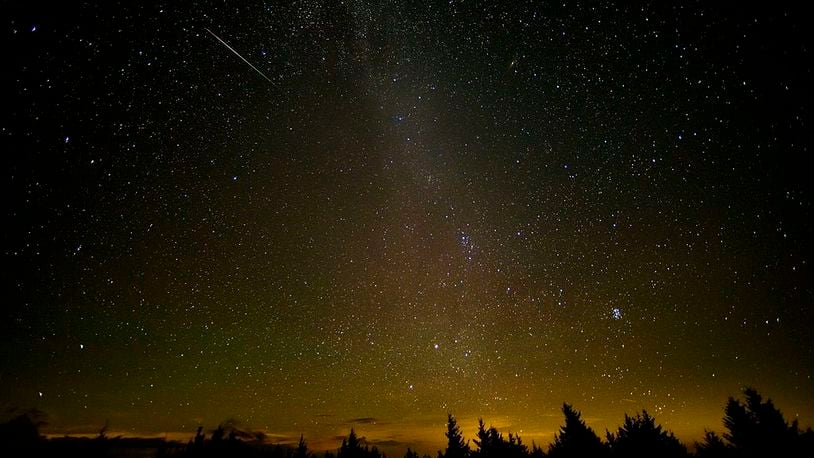The Perseid meteors are small specks of ice and dust that come from the tail of Comet Swift-Tuttle. Named after the constellation Perseus, the Perseids appear when the Earth collides with these small particles from the tail of the comet.
What to look for
Local professor and astronomer Joe Childers says people can expect Aug. 11-12, to be the most promising time to see the showers. During this time, the meteor shower is expected to peak and stargazers are likely to see the sky light up.
“Any time after midnight – but especially in the hour before dawn twilight begins – settle into a comfortable chair or bean bag and look up,” Childers said. “Every few minutes, you are likely to see a shooting star.”
In case you miss it, Childers says any clear night a few days after is fine. The meteor shower will also be visible Aug. 13, according to the American Meteor Society.
Rich in bright meteors and fireballs, the Perseids meteor shower is one of the best of the year and it peaks on Aug. 11-12. Here are tips on how to watch it: https://t.co/VfRgb1zVrX
— NASA (@NASA) August 10, 2020
📷 : @nasahqphoto pic.twitter.com/Td6bcZ7cTa
Know before you glow
When it comes to stargazing, the darker the better. Childers warns the light from the moon this week will likely wash out the fainter meteors. However, the Perseids are noted for having many bright meteors, so it’s well worth the watch, Childers said.
The moonlight isn’t the only contributor to brightening the night sky. Light pollution is something that affects your ability to see the night sky clearly and has larger implications for the environment.
“Light pollution impacts a number of things,” Five Rivers MetroParks education coordinator Joshua York said. “Animals change their nocturnal habits due to light pollution.”
MetroParks has signed the Lights Out Miami Valley agreement to keep its building lights off at night. Households are invited to participate when possible.
If your children are interested in learning more about light pollution, consider participating in this citizen science project, Globe at Night.
For stargazing purposes, you’ll want to find the darkest spot in your yard. Turn your household lights off and move away from street lights.
If possible, head away from city glow. The Germantown area is a great place to stargaze, as it has little light pollution. (Note: Germantown MetroPark’s hours are 8 a.m. to 10 p.m.)
Make it an adventure
An outdoor recreation enthusiast, Childers recommends stargazing as part of a larger adventure.
“Watching meteor showers is a fantastic way to pass the time while night fishing,” he said.
Camping also is a great way to make stargazing an outdoor event for you and your family at a favorite camping spot or in your back yard.
VIEWING TIPS
The Perseids are best viewed in the Northern Hemisphere during the pre-dawn hours between about 2 a.m. your local time and dawn., according to NASA.
You can go out after dark, around 9 p.m. local time, and see a few Perseids.
No special equipment is needed to view. Give your eyes plenty of time to adjust to the dark for optimal viewing. Choose a location as far from artificial light as possible (turn off exterior lights and avoid street lights).
Get comfortable by sitting in a reclining lawn chair or lying on your back to have a wide-open view.
A live broadcast of the meteor shower from a camera at NASA’s Marshall Space Flight Center in Huntsville, Ala., will be available weather permitting on the NASA Meteor Watch Facebook starting around 9 p.m. on Aug. 11 and continuing until sunrise on Aug. 12.
Contributing writer Lauren Lemons is the Community Outreach Coordinator for Five Rivers MetroParks. Contact her at Lauren.Lemons@metroparks.org.
About the Author
